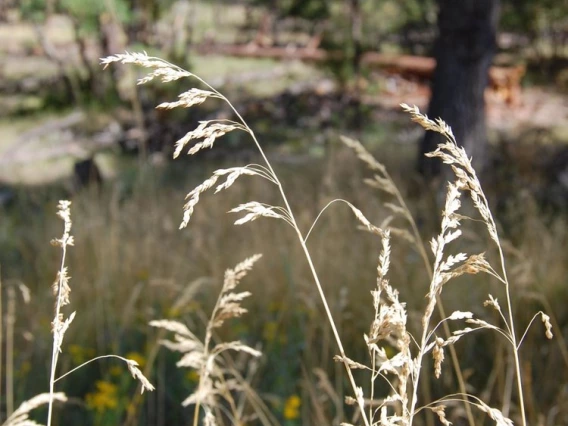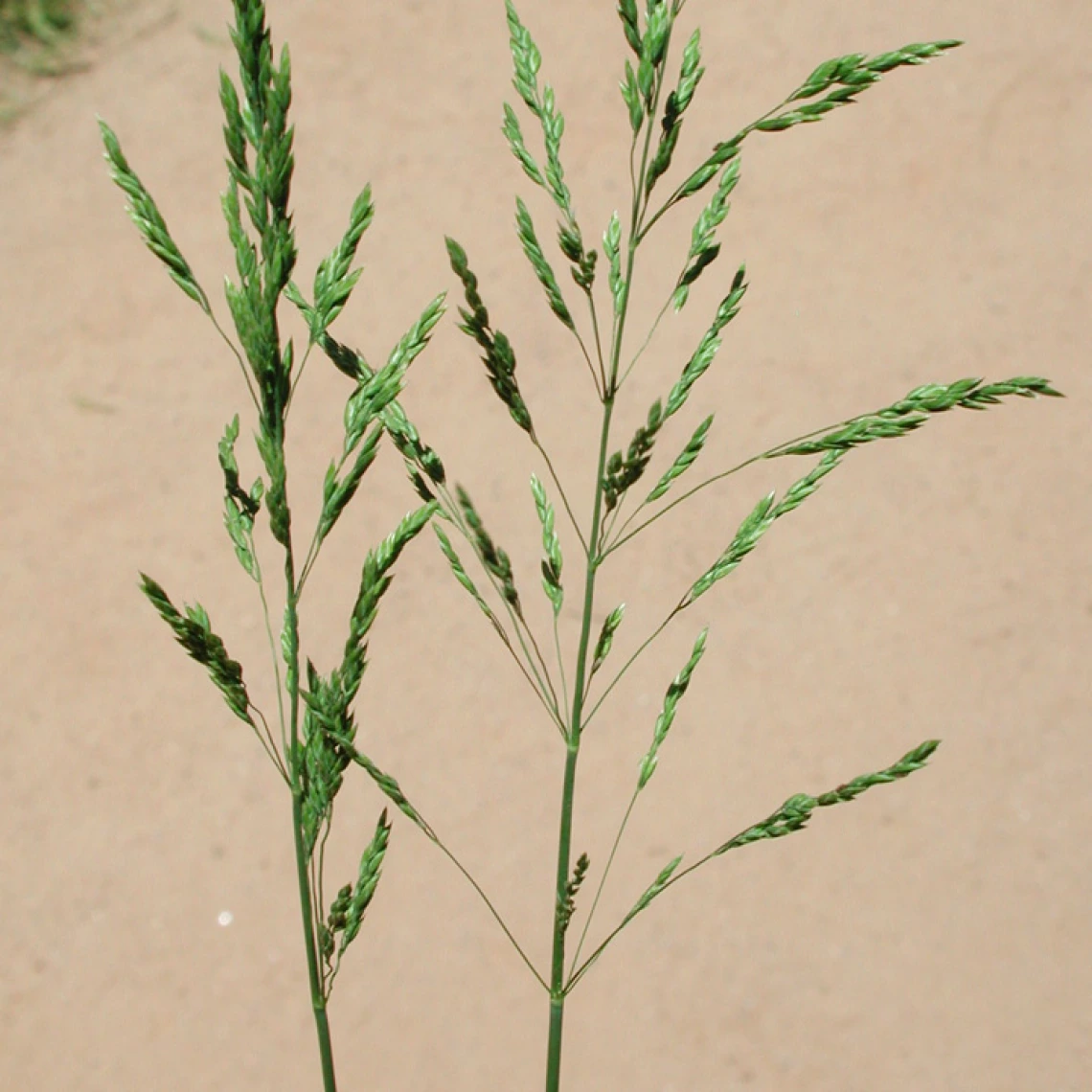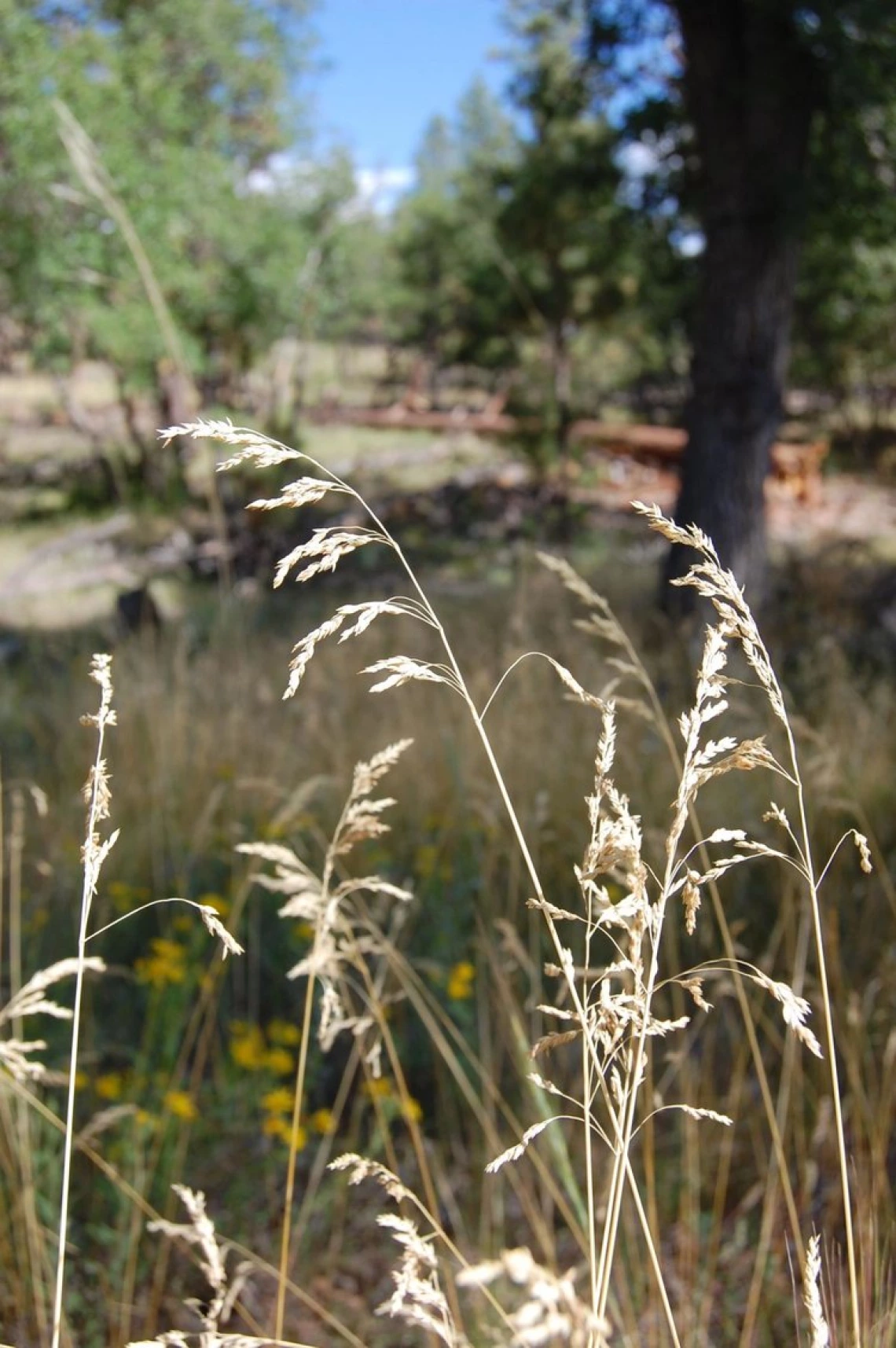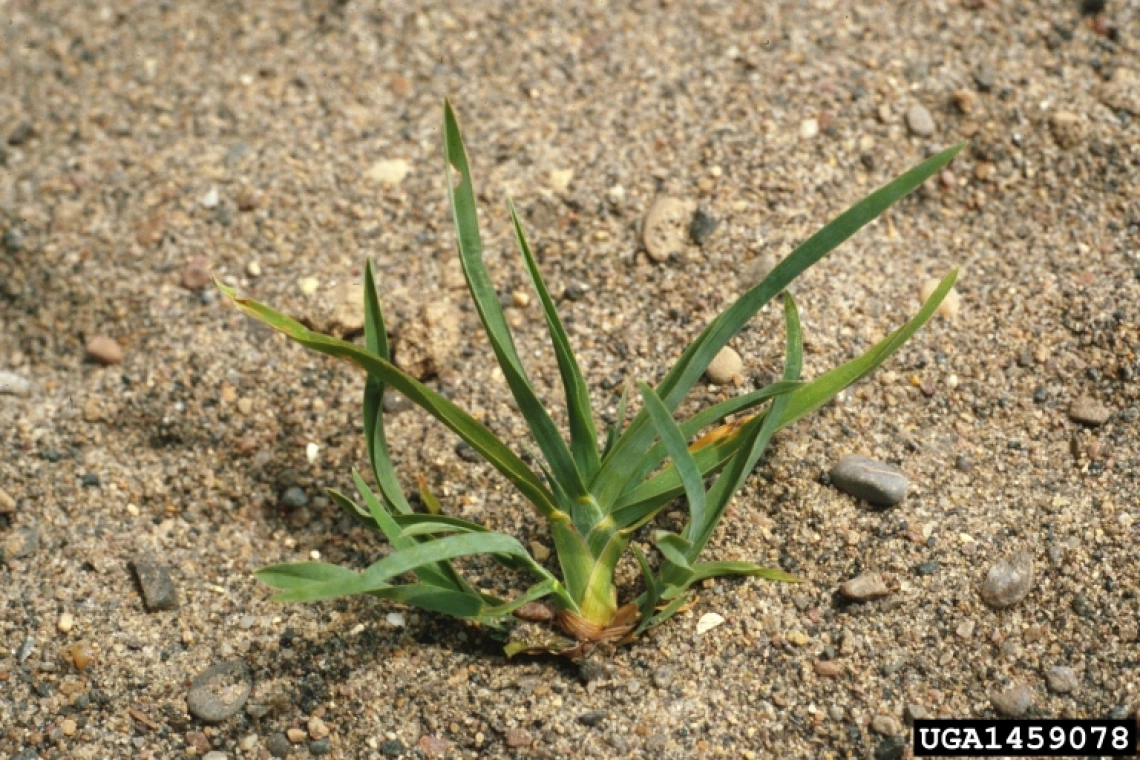Image
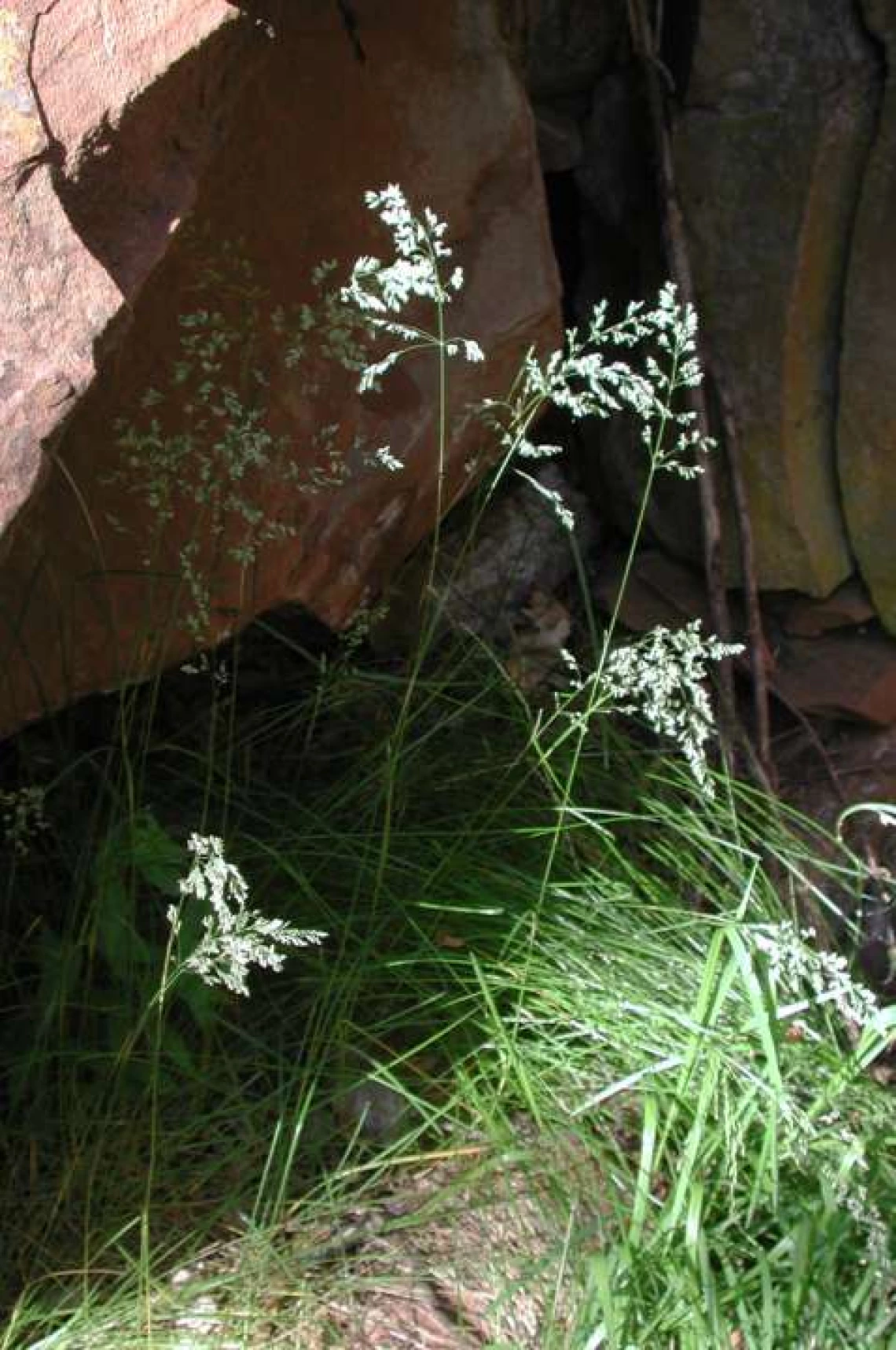
Kentucky bluegrass
Max Licher, swbiodiversity.org/seinet
Common Name(s)
Kentucky bluegrass
Scientific Name
Poa pratensis
Family
Grass family (Poaceae)
Reasons for concern
Kentucky bluegrass can easily escape home landscapes and take over natural areas, particularly where there is additional moisture. It will outcompete more desirable native plants and reduce plant diversity and favorable wildlife habitat.
Classification
Non-native
Botanical description
Sod forming grass. Leaves: Leaves soft, smooth, 6 to 12 inches long. Greens up after drought. Can be distinguished from other grasses by its narrow leaf blade, which is V-shaped in cross section, and is boat-shaped at tip. Leaf blades have 2 distinct, clear lines, one on each side of the crease.
Stem(s)
Grows low to the ground in early spring and fall. Grows erect in late spring and summer. Up to 18 to 24 inches tall, slightly flattened (not quite round).
Inflorescence
Loosely branched. Green to purplish. Goes to seed April through July. Cobweb-like hairs are at the base of the seed.
Roots
Fibrous root system shallow to deep. Root growth greatest in spring and fall, slows dramatically in summer. Extensive rhizomes.
Native to
Europe, northern Asia, and the mountains of Algeria and Morocco
Where it grows
Roadsides, orchards, landscaped areas, pastures, rangelands, grasslands, riparian areas, forests and meadows. Tolerates partial shade. Does not tolerate poorly drained sites. Grows best in cool, moist places on soils rich in organic matter and with full sun from mid to high elevations.
Lifecycle
Perennial
Reproduction
By many tiny seeds and rhizomes (horizontal underground stems) Kentucky bluegrass.
Weedy Characteristics
There are more than 2,000,000 tiny Kentucky bluegrass seeds per pound. Buried seeds can survive more than 30 years. Many long and thick creeping rhizomes help plant to spread extensively and are hard to completely remove by digging. Goes dormant during heat of summer, but revives with rains.
Look-alike Plants
Image
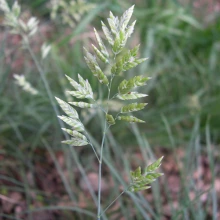
Muttongrass
Max Licher, swbiodiversity.org/seinet
Related grasses in same genus, such as muttongrass (Poa fendleriana) look similar to Kentucky bluegrass. Muttongrass is a bunchgrass and does not spread by rhizomes. It goes to seed in June or July.
Control Strategies
Do not let this grass go to seed. Use weed barrier cloth or heavy mulch, if appropriate. It is difficult to eradicate because it is a perennial. Try to get the roots, without disturbing soil too much. Frequently monitor previous infestations for new growth. Plant desirable native species to outcompete invasives.
References
- Kentucky bluegrass Invasive Plant Atlas of the United States. USDA
- Annual bluegrass California Statewide Integrated Pest Management, University of California


